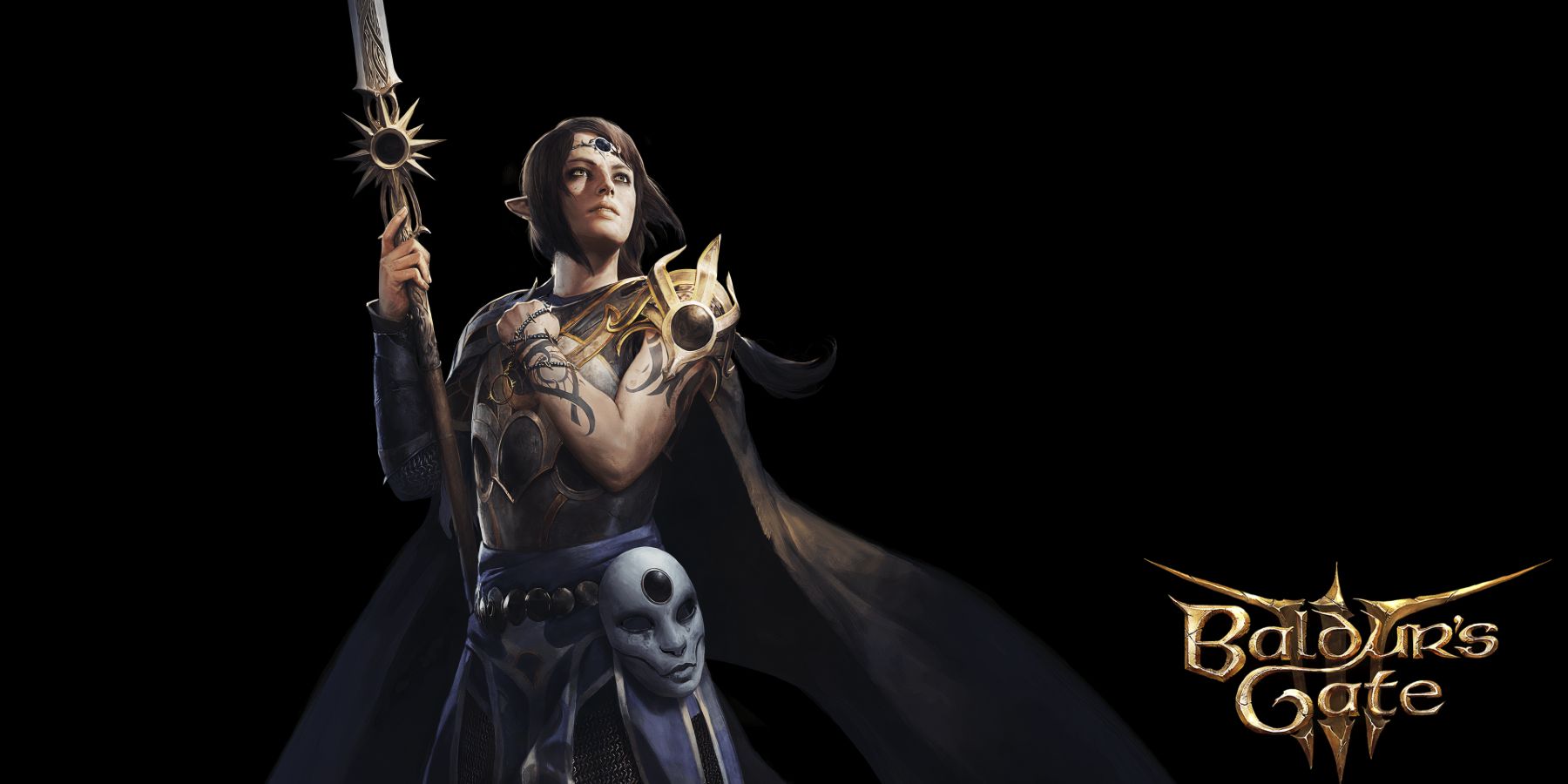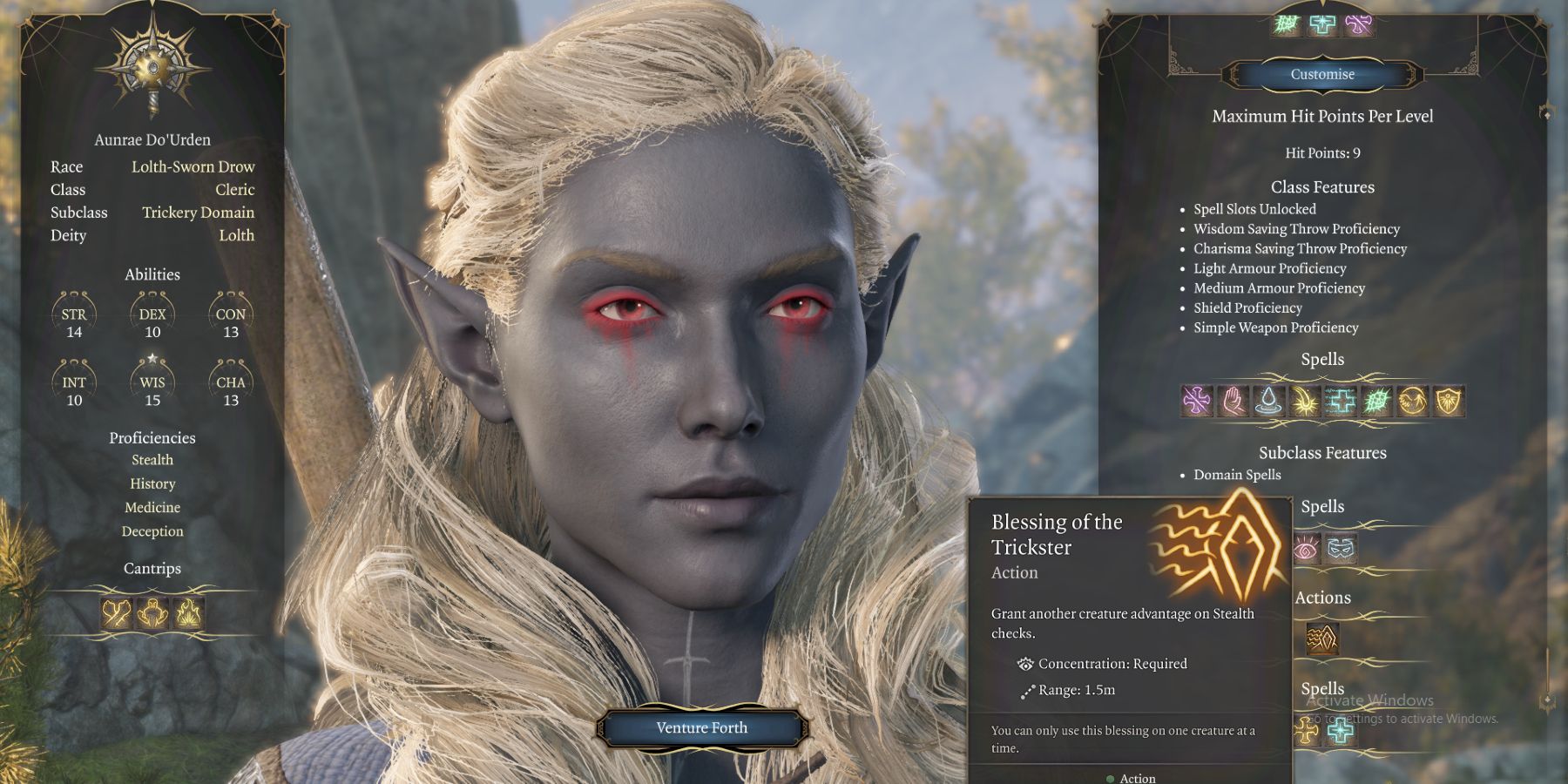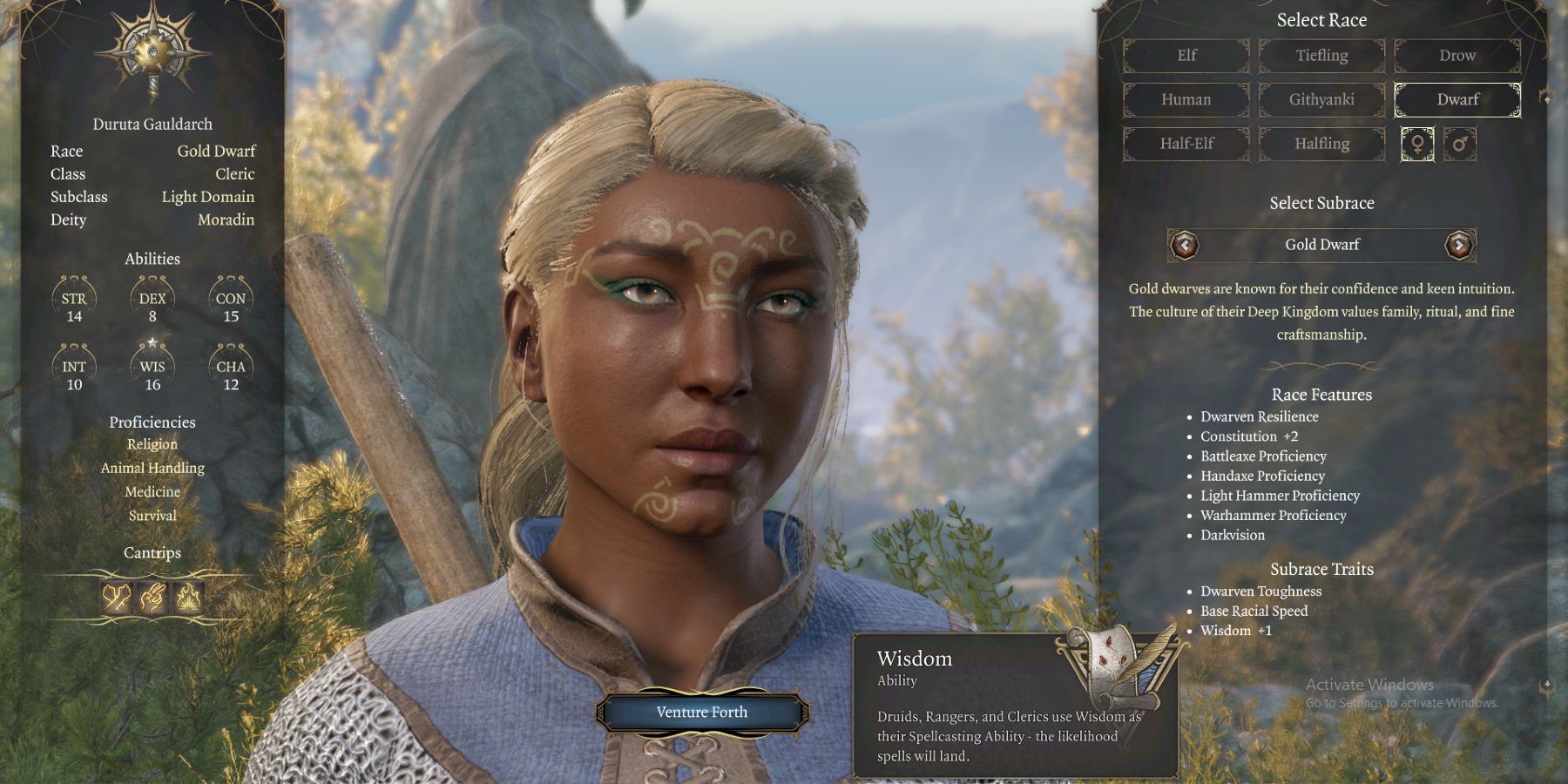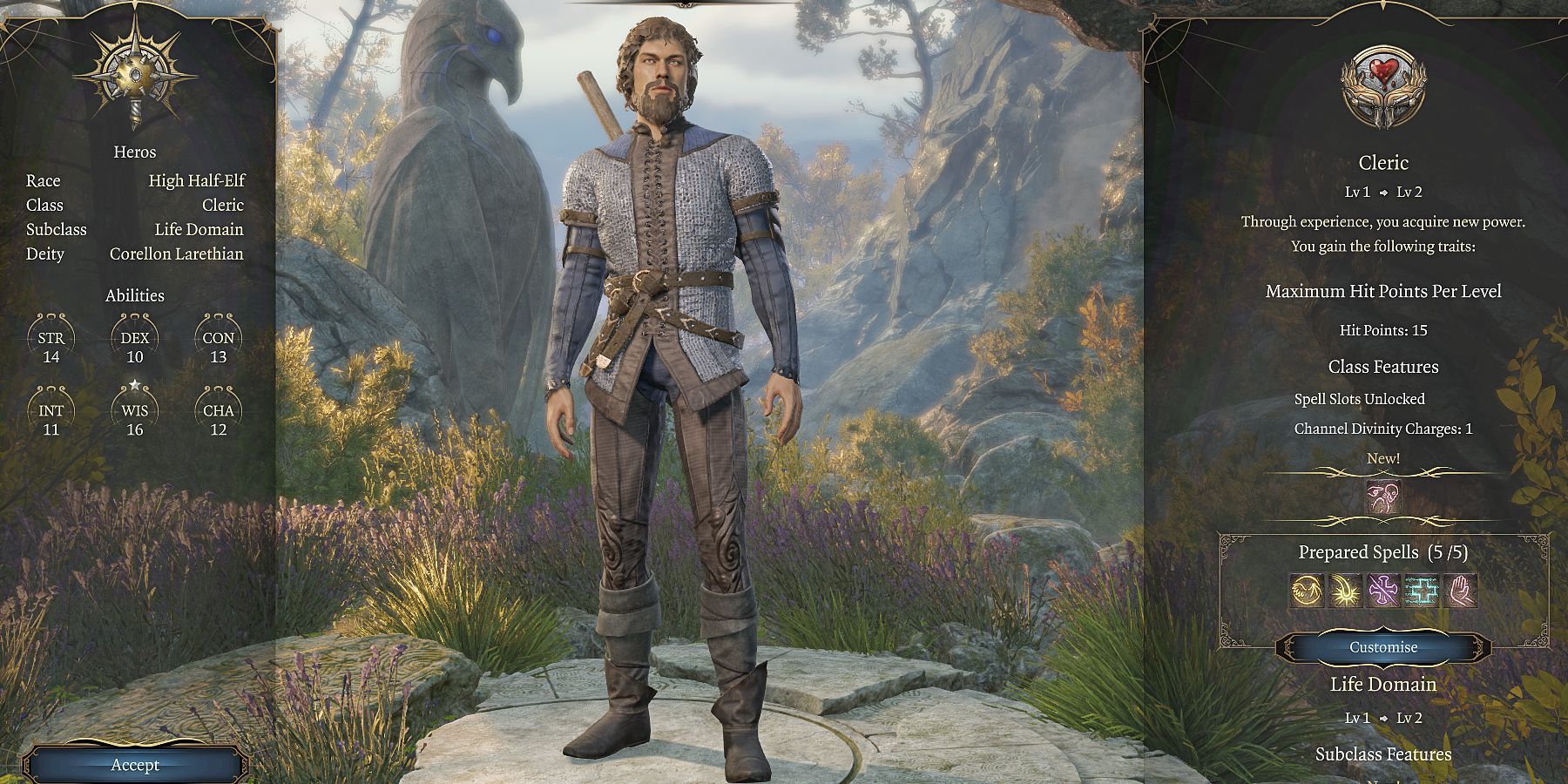In the early access of Baldur's Gate III, the cleric is one of the first six classes available for players to use. Clerics wield the powers of whatever Gods they serve. Thoroughly dedicated to their god, they can cause mass destruction or bring light to the world.
As this game is still in early access, there are not as many options available currently as there will be in the future. This guide only pertains to what is currently available for players. From subclass, to deity, to race, and more, here are the best options for building a cleric.
Deities, Domains, and Spells for Clerics in Baldur's Gate III
As a Cleric draws most, if not all, of their inspiration and power from a single deity, they should choose wisely. There are only three available domains to pick from as a Cleric currently. These domains are Life, Light, and Trickery.
While all Clerics have the ability to heal other members of their party, Life clerics take the cake. They usually follow good deities and have several spells that protect and restore. The deities that best fit this type of Cleric are Tempus, Tyr, Helm, Ilmater, and Eilistrace. Not all of the deities that are currently available belong to any of the domains but can still be used as the player's deity. Life Clerics receive the heavy armor proficiency as well as Disciple of Life, and two domain spells. Disciple of Life heals a targeted character(s) for an additional two plus the spell level in hit points. The two domain spells are Bless and Cure Wounds.
Clerics of Light are a more fighting based cleric, similar to a vigilante. They always follow a deity of good or fire of some kind. The deities that best fit the Cleric of Light are Selúne, Ilmater, Mystra, Corellon Larethian, and Yondalla. The Light domain cleric gains two domain-specific spells and the Warding Flare action. Warding Flare shields the character in divine light giving their attackers disadvantage on attacks. The spells gifted to this subclass are Burning Hands, Faerie Fire, and Light.
Trickery based Clerics are the only currently playable "dark" clerics. Though not all trickery Clerics are evil, most are. Deities that best fit a cleric of Trickery are Garl Glittergold, Lolth, Shar, and Bane. Clerics of Trickery gain two domain spells as well as an action that is special to their subclass. These are the Charm Person and Disguise Self spells along with the Blessing of the Trickster action which gives the player advantage on Stealth checks.
No matter the domain or deity is chosen, all clerics have access to three cantrips and four level-one spells at the start of the game. These are the choices available.
Cantrips:
- Guidance - A spell that gives the target an additional d4 bonus on an ability check of the player's choice.
- Light - A spell that imbues an object with light.
- Resistance - A spell that gives the target an additional d4 bonus to their saving throws.
- Sacred Flame - An attack spell that deals 1d8 radiant damage.
- Thaumaturgy - A spell that gives advantage to the player's Intimidation and Performance checks.
Out of these, the most useful to any Cleric are Sacred Flame, Guidance, and Resistance. Light isn't useful to a Light Cleric as they'll already get this spell from their domain, and Thaumaturgy is very situational.
Level One Spells:
- Bane - A spell that targets up to three creatures giving them a d4 penalty to attack rolls and saving throws for 10 rounds.
- Command (Halt) - A spell that prevents a target from moving or taking actions for one round.
- Create Water - A spell that calls out rain to drown out flames and creates a puddle.
- Guiding Bolt - An attack spell that deals 4d6 radiant damage and gives advantage to whoever attacks the target next.
- Healing Word - A light healing spell that heals a target for 1d4 plus the player's level in hit points.
- Inflict Wounds - An short-range attack spell that deals 3d10 necrotic damage to a target.
- Protection from Evil and Good - Protects a creature for one round from aberrations, celestials, elementals, fey, fiends, and undead. The target cannot be charmed, frightened, or possessed by any of these creatures. Creatures of this nature also get a disadvantage on attacking the target.
- Shield of Faith - Grants the target an extra two points to their armor class for one round.
These are all fairly useful. Out of the bunch, the most powerful seem to be Bane, Guiding Bolt, Healing Word, and Inflict Wounds. The other options are also great, but a mixture of buffing, healing, and damage would be the best focus.
Races and Subraces for Clerics in Baldur's Gate III
One of the biggest things that the race choices affect in the game, is the character's ability scores. Clerics' highest focus in abilities should be Wisdom and Constitution. Outside of these two ability scores is mostly up to playstyle differences. However, as Wisdom is the most important score, let's look at what races boost that score.
Out of the eight current races available, the best ones for a cleric are Dwarf, Elf, Human, and Half-Elf. Each of these with a specific subrace have boosts to their Wisdom ability score. Specifically, Gold Dwarves, Wood Elves, and Wood Half-Elves are the best of their subclasses. Humans are pretty much good for any class as they gain a +1 to every ability score.
Gold Dwarves have Dwarven Resilience, battleaxe proficiency, handaxe proficiency, light hammer proficiency, warhammer proficiency, darkvision, Dwarven Toughness, a +2 to Constitution, and a +1 to Wisdom. Gold Dwarves make great combative clerics, that aren't so focused on their magical abilities. This makes them great for both the life and light domains.
Wood Elves have Keen Senses, Fey Ancestry, proficiency in longsword, shortsword, longbow, and shortbow, as well as darkvision, Fleet of Foot, and Mask of the Wild. Their ability modifiers at a +2 to Dexterity and +1 to Wisdom. Wood Half-Elves have fairly similar traits to the regular Wood Elves with slightly more choice. Wood Elves would do great as a ranged cleric with some stealth mixed in. Due to this, they can make great life and trickery clerics.
Origins and Skill Selection for Clerics in Baldur's Gate III
Origins are essentially the background of the character and give the player two to three skill proficiencies. There are 13 different backgrounds currently available in the early access version of the game. The most obvious of the origins for a Cleric would be the Acolyte, but players can get more creative with other possible options that could make the character well-rounded.
Alternatives to the Acolyte origin for Life domain clerics could be Hermit, Sage, Soldier, Outlander, and Noble. Light clerics would do well with backgrounds like Sage, Sailor, Soldier, and Folk Hero. Finally, Trickery clerics could have much darker origins like Urchin, Charlatan, Criminal, and Entertainer.
Each of these backgrounds will affect how the character plays and what knowledge they will have access to, so choose wisely. Remember that outside of these two skill proficiencies, players will get to choose two of their own accord. The list covers History, Insight, Medicine, Persuasion, and Religion. If religion or medicine aren't covered by the background, these are usually great choices. However, Insight and Persuasion can be more helpful to a trickster or light domain cleric.
Baldur's Gate III early access is now available on PC.




